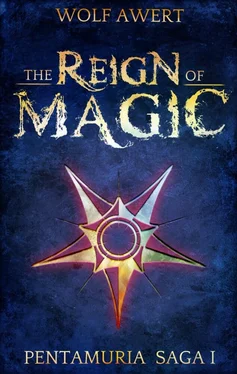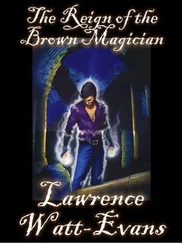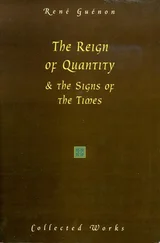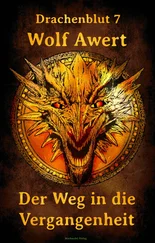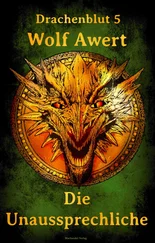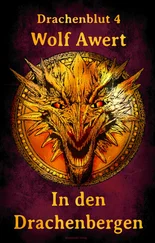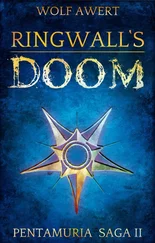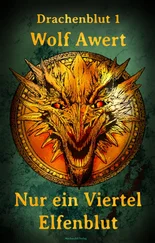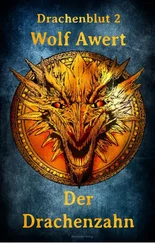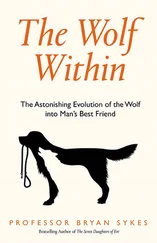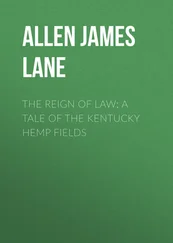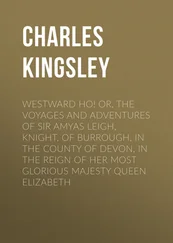In the long evenings of the short season Nill liked to stay home and watch Esara’s attempts to catch a glimpse of the future. For her prophecies she did not just use the rune bones, twigs or knotted grass, but also a mixture of white ash and light sand which she spread out on a large, flat stone in a five-pointed wooden frame. She would sit in front of the white sand for a long while before she took the oracle twig and hastily drew a few signs in the dust.
Nill began to imitate her, and before long he too would draw unsteady pictures in the sand with a twig. He did not realize that Esara was not drawing at all, but rather that her spirit took control of her in those moments. During these silent moments of immersion Esara did not know what she was doing, and the meaning of the symbols that she drew was forgotten soon after. The strength of the symbols however was strong enough to make a connection between Esara and the stars above.
Nill took great care to make sure Esara did not notice what he did. Even though he had never been forbidden from doing anything, he felt that she would not be happy if she saw him using her precious ash sand. White sand was very expensive in Earthland, where the world was clad in brown and red. The earth had to be washed for a long time until it released what little sand it hid. After that, it took even longer for the red or brown sand to lose its color in the sour Kamander solution to finally show the white it needed for the runes to find an anchor.
There came a time when Nill dreamed. They were terrible dreams from which he woke screaming, and they were peaceful dreams which made him smile in his sleep. Every morning, when Esara had left Grovehall, Nill sat down before the Stone of Prophecy and drew his dreams. On one of those mornings he just could not get it right. He scratched lines into the sand, brushed them away again and began anew. Over and over again, for so long that he all but forgot the time.
“What are you doing?” Esara’s voice was quiet, but it came through the silence like a whip. Nill started so badly that part of the ash flew from the stone plate. “Do you not know that it is one of the worst possible crimes to draw pictures or symbols? The Reeve alone may do that, and even he only does it in secret. If you want to make pictures, carve them out of wood, like Cramas Clumpfoot does.” Esara’s voice had become so quiet that Nill could barely hear her.
“But you do it, I’ve seen you,” Nill whispered hoarsely.
“Yes, I do it. Or, more precisely, it happens to me. There once was a time when I was allowed to, and I still know how.”
Esara began to chuckle. It turned into a mad cackle and Nill started for a second time as he saw his care-mother’s face change. The eyes grew smaller, the mouth opened in a gape as if it wanted to say something. But as quickly as it had come it was gone, and Esara looked as she always had done.
“But I want to draw pictures! I have to. Do you understand? I have to draw this forest here,” Nill objected.
“You don’t know any forests. There are no forests in Earthland, only shrubs and bushes. How are you going to know a forest? Nobody can draw something they’ve never seen,” Esara said.
“I saw this forest in my dream. It’s the forest I dream of, but I can’t draw it.”
“Well, why not?” Esara asked.
“It has to be there. All of it.”
“You’ll never be able to draw all of it. Do the most important parts.”
“What’s the most important?”
“Whatever you can draw in the shortest time possible.”
Nill brushed his previous attempts away again and scratched into the sand a forest consisting entirely of vertical lines.
“What is that?” Esara asked.
“A forest.”
“I don’t see a forest in that.”
“It’s just the trunks, I left out the rest.”
“Then the forest is missing all that is important.”
“I can’t do more in so little time.”
“You can, you just didn’t try.”
On his next try Nill drew a forest, made up of three unequal-sized vertical lines. On top of these lines he drew a circle and a pointed edge, and between them a cross, two small horizontal lines and a dot.
“Good,” Esara said. “I know this forest, and I know where it lies.”
Nill’s illustrations became simpler, and soon he found that he enjoyed drawing messages in pictures that nobody except himself and his mother could understand.
“Tell nobody, under pain of death, what you’re doing here. Promise me that, and I will show you something far more powerful and dangerous than any picture.”
Esara had red spots on her cheeks, and her eyes were shining bright. Nill had never seen his mother so serious and worked-up and did not understand what she meant. More to calm her than of his own volition he swore a solemn oath.
“If you make a picture simpler and simpler, you get symbols. Some of these symbols are immensely powerful, but I cannot show them to you, and I don’t understand them myself anymore.”
A sad shadow flitted across Esara’s face and vanished as fast as it had come.
“Every symbol, strong or weak, tells a story. They tell stories the way words cannot. Words are spoken quickly and easily overheard. Words can enchant, but symbols will burn into a human forever. Symbols do not enchant, they change. Nobody can know of what I have told you.”
“And you can make these symbols?” Nill asked.
Esara nodded. “Some of them. They did not take everything from me.”
“Who took it away from you?” Nill asked angrily, for if someone took something from Esara, they had taken it from him too, and after ten harvests Nill felt old and strong enough to defend himself, Esara and Grovehall against all evil.
Esara looked upon her boy affectionately, seeing the thin arms, the skinny body, the thin blond hair. She also saw two splinters of Ironstone in Nill’s eyes, around which a mighty will began to coalesce.
“It was a long time ago. It’s alright,” she said.
Nill learned not only the symbol script, but also the runes and other scripts that looked like knotted grass. He never understood why just one script was not enough, but it pleased him to play around with the symbols and rearrange them into new orders.
“Look here,” he said one day. “This is a wonderful grass-word, and it sounds wonderful as well.”
“Yes, but that word doesn’t exist. There is no meaning behind it.”
Nill frowned. “Then I will give it one. I just need to find out what it fits with.”
It was but a small step from the runes to truth-telling, and so Nill asked one evening: “How is it that bones know the future?”
“The bones don’t know it. The one who throws the bones is the one who knows.”
Nill took the bones and tossed them across the stone slab.
“This isn’t how it works. You have to look at the oracle-bones and listen to your inner self.”
Nill listened to his inner self, but heard nothing but the blood rushing in his ears and the unsteady beating of his heart.
“There’s nothing there,” he complained, and the accusation in his voice could not be overheard.
“That is because you have no connection to the stones yet,” said Esara. “Even if body and soul know the future, neither knows that they know.”
Nill stared blankly.
“The art of truth-telling is, in essence, to touch the knowledge of the future that hides within you.”
“But I don’t know the future.”
“Yes you do,” Esara contradicted him. “The future is always preceded by messengers that show what will be tomorrow. Your spirit sees these messengers and knows what will happen. But still your spirit keeps its secrets.”
Nill stayed quiet, rather annoyed. He had a feeling that adults never gave him a clear answer when he wanted to know something.
Читать дальше
